Safety Observation Report Samples
-
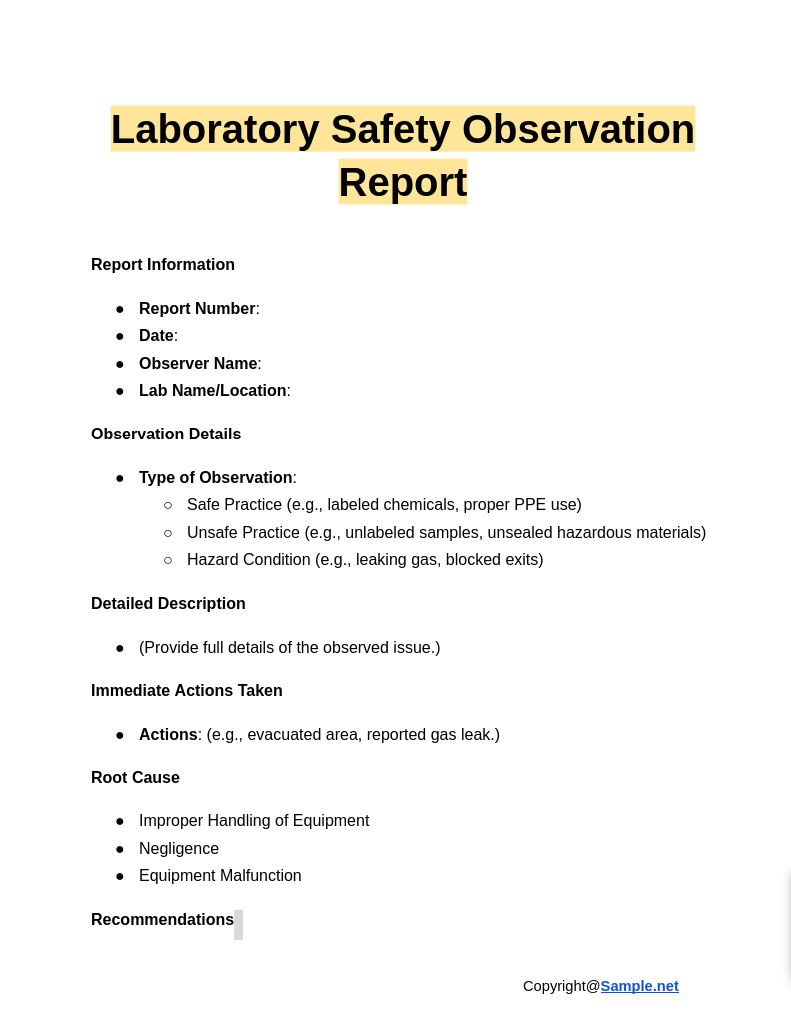
Laboratory Safety Observation Report
download now -

Kitchen Safety Observation Report
download now -
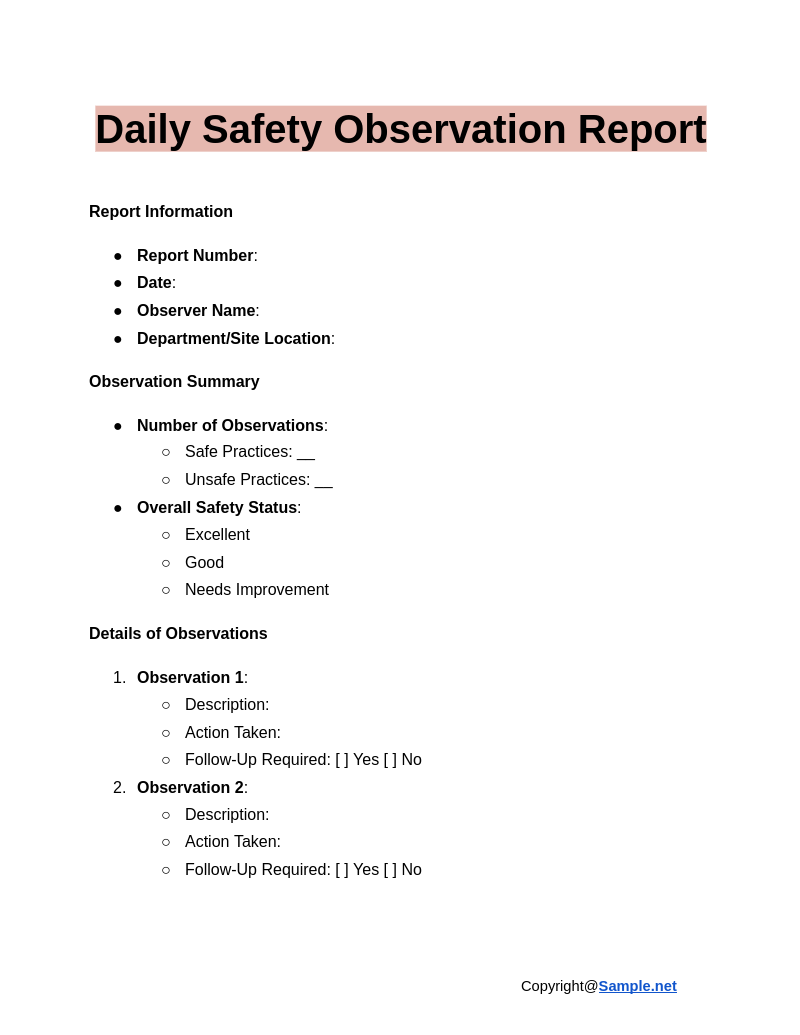
Daily Safety Observation Report
download now -
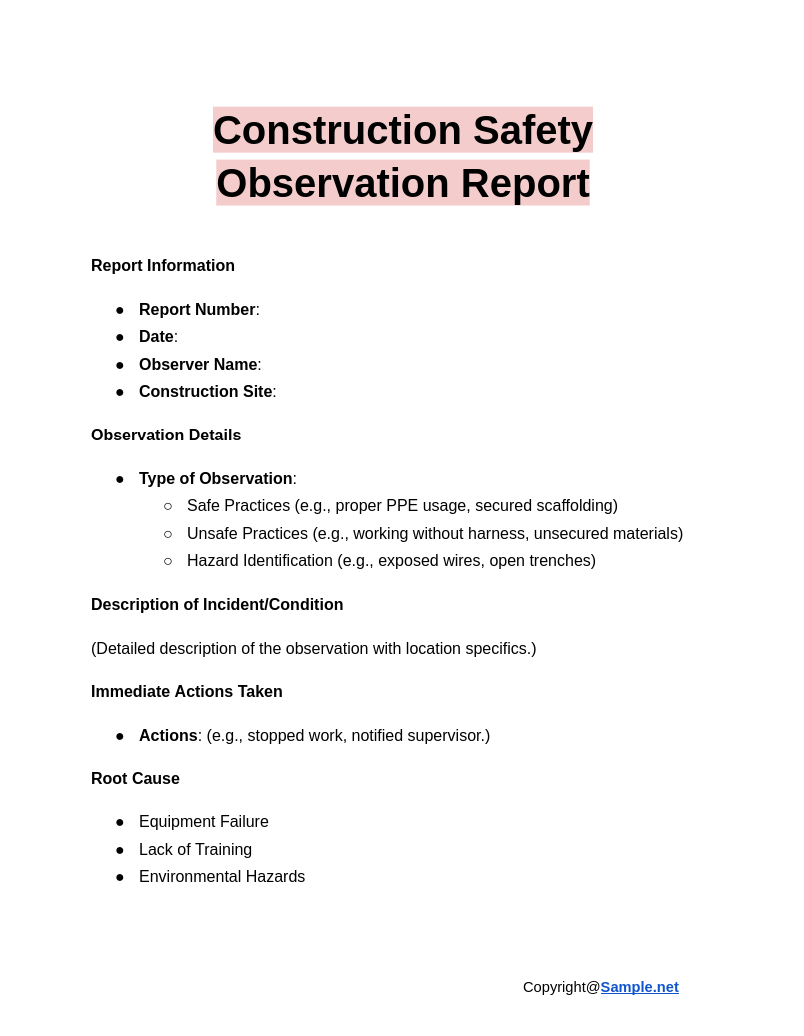
Construction Safety Observation Report
download now -

Safety Observation Report Template
download now -
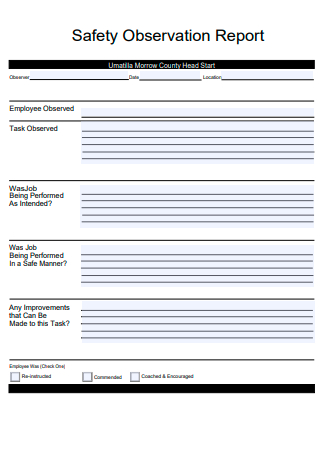
Basic Safety Observation Report
download now -
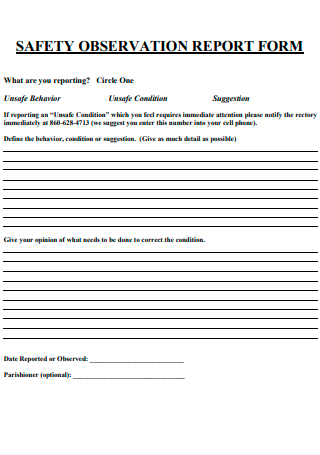
Safety Observation Report Form
download now -
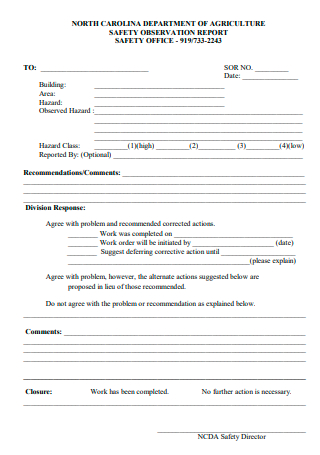
Safety Office Observation Report
download now -
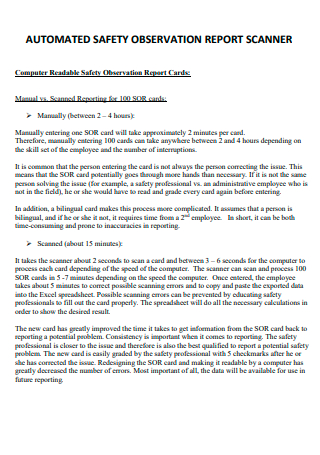
Automated Safety Observation Report Scanner
download now -

Safety Observation Report Example
download now
FREE Safety Observation Report s to Download
Safety Observation Report Format
Safety Observation Report Samples
a Safety Observation Report?
Purposes of a Safety Observation Report
How To Perform a Safety Observation Report
FAQs
What should I include in my observation?
What is the significance of observation?
What is the point of putting safety first?
Can Safety Observation Reports be used in training programs?
What is the role of technology in creating Safety Observation Reports?
How can Safety Observation Reports improve employee morale?
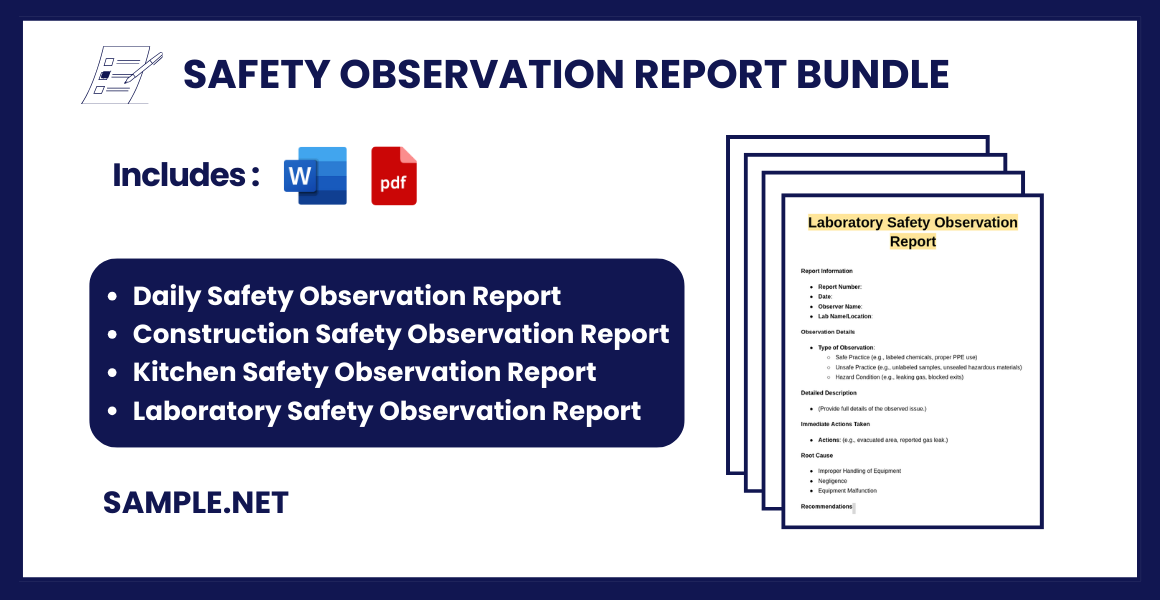
Download Safety Observation Report Bundle
Safety Observation Report Format
1. Report Information
- Report Number: (e.g., SOR-001)
- Date of Observation: (dd/mm/yyyy)
- Observer Name:
- Observer Department/Role:
- Location of Observation: (specific area/department/site)
2. Description of the Observation
- Type of Observation:
- Safe Practice
- Unsafe Practice
- Near Miss
- Unsafe Condition
- Detailed Description:
(Provide a detailed narrative of what was observed, including actions, behaviors, and conditions.)
3. Immediate Actions Taken
- Action(s) Taken:
(Specify any actions taken to address the observation immediately.)- Corrected the issue.
- Reported to the supervisor.
- Provided verbal feedback to the involved individuals.
- Responsible Person(s):
(Who was involved in addressing the issue?)
4. Root Cause Analysis
- Primary Cause(s) Identified:
(Select applicable causes and describe in detail.)- Lack of Training
- Poor Maintenance
- Unsafe Practices
- Hazardous Conditions
5. Recommendations for Improvement
- Proposed Actions:
(Suggest preventive measures to ensure safety and avoid recurrence.)- Conduct additional training.
- Perform equipment maintenance.
- Implement new safety procedures.
- Enhance hazard communication.
6. Evidence
- Attachments:
(Include any supporting evidence such as photos, videos, or documents, if applicable.)
7. Follow-Up Plan
- Follow-Up Date: (dd/mm/yyyy)
- Assigned Person for Follow-Up: (Name/Role)
- Status of Corrective Action:
- Pending
- In Progress
- Completed
8. Approval and Acknowledgment
- Observer Signature: ________________________
- Supervisor Signature: ________________________
- Date of Approval: ________________________
What is a Safety Observation Report?
A Safety Observation Report (SOR) is a structured document designed to capture and analyze observations of workplace safety. It identifies both positive safety practices and unsafe conditions or behaviors, providing valuable insights for risk mitigation. This report enables organizations to take preventive actions against hazards, ensure compliance with safety regulations, and promote a culture of continuous improvement in safety standards. You can also see more on Inspection Reports.
Purposes of a Safety Observation Report
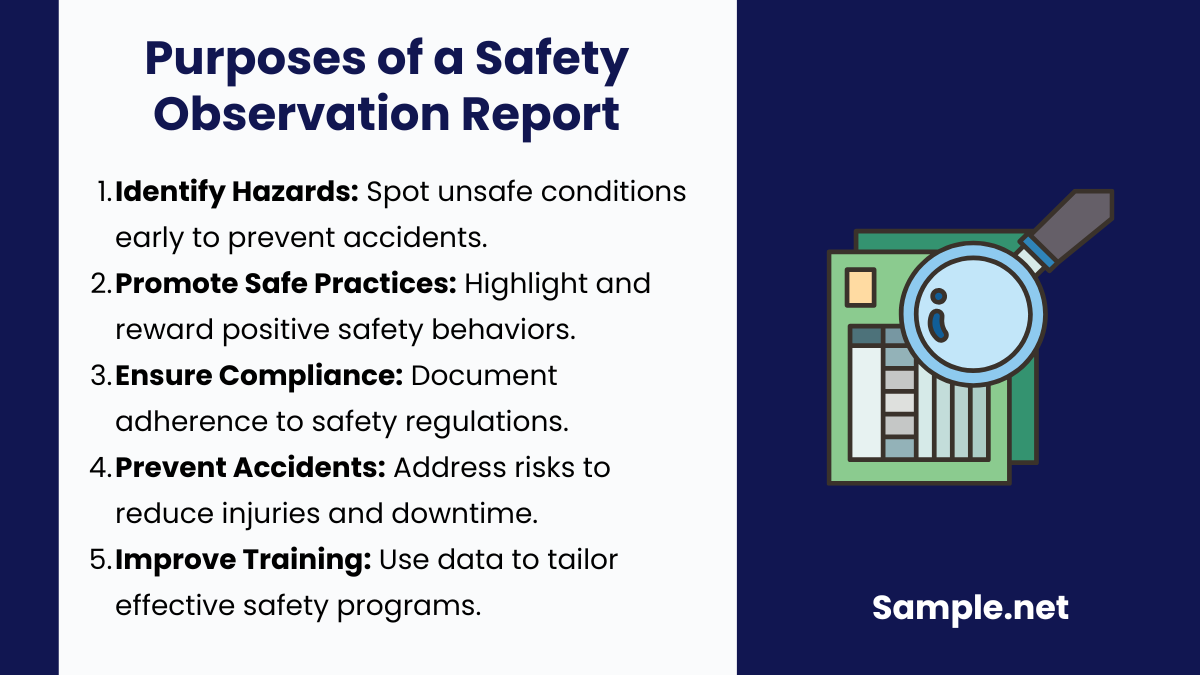
1. Identifying and Mitigating Hazards
A primary purpose of the Safety Observation Report is to pinpoint unsafe conditions or behaviors in the workplace. Observations may include faulty equipment, improper use of machinery, or hazardous materials left unattended. Identifying these risks early helps to prevent accidents and ensures that corrective actions can be taken promptly. This proactive approach minimizes the likelihood of injuries and fosters a safer work environment. Regular hazard identification promotes a culture of continuous safety improvement.
2. Encouraging Safe Practices
Safety Observation Reports document not only unsafe actions but also commendable safety practices among employees. By recognizing and reinforcing positive behaviors, organizations can motivate workers to adhere to safety standards consistently. For example, rewarding the correct use of personal protective equipment (PPE) encourages compliance. Over time, these positive reinforcements lead to a more safety-conscious workforce. The report serves as a tool to highlight and promote good safety habits across the organization. You can also see more on Teacher Observation Report.
3. Enhancing Compliance with Regulations
Regulatory bodies often require businesses to maintain a record of safety measures and observations. The Safety Observation Report provides documented evidence of an organization’s commitment to following occupational safety and health regulations. Regularly updated reports demonstrate due diligence and readiness for inspections or audits. Compliance not only avoids legal penalties but also enhances the company’s reputation. The report acts as a vital document for demonstrating adherence to safety laws.
4. Preventing Workplace Accidents
By systematically documenting unsafe conditions and addressing them, the report plays a critical role in accident prevention. Insights from past reports can identify patterns and recurring risks, allowing for preemptive action. Preventing accidents reduces downtime, medical expenses, and potential compensation claims. Furthermore, it ensures employees feel safer and more confident in their work environment. This focus on prevention aligns with the organization’s broader goal of operational efficiency and employee well-being. You can also see more on Teachers Weekly Report.
5. Facilitating Training and Development
Data from Safety Observation Reports is invaluable for designing effective safety training programs. They highlight areas where employees need better understanding or skill development, such as handling hazardous materials or operating machinery safely. Training sessions can then be tailored to address these specific gaps. Additionally, using real-world examples from reports makes training more relatable and impactful. Continuous training based on observation insights ensures long-term improvements in workplace safety.
How To Perform a Safety Observation Report
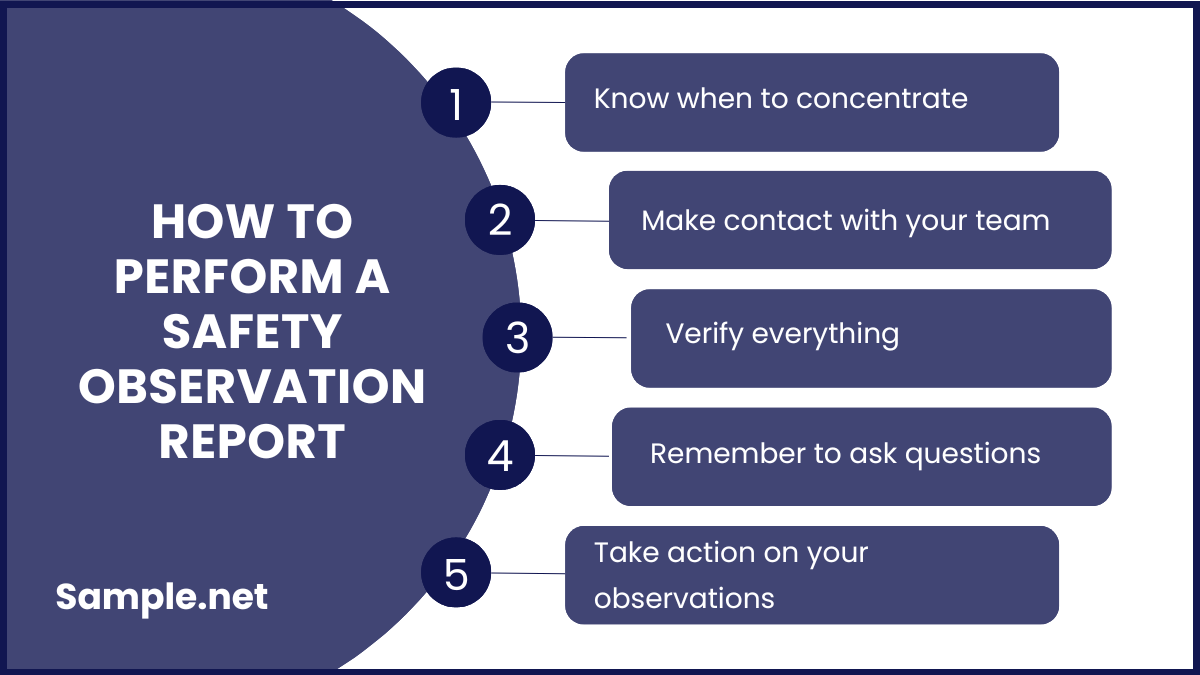
A security perception is critical because it may act as risk management, ensuring that security is maintained. It monitors how employees behave in their workplace and determines whether such conduct could be a risk factor for harmful working conditions. It makes a difference by eliminating the risk of future mishaps and enticing employees to engage in safe work method statements and practices. Both professionals and individuals must value the value of workplace safety. To properly conduct a safety observation report, authorities must follow a few processes and criteria.
Step:1 Know when to concentrate.
Conducting safety observation may need a high level of concentration. Bear in mind that you measure the security of an area to ascertain whether or not employees feel secure in their workplace. To maintain a high level of focus, one must have a calm and relaxed intellect. Therefore, avoid overpowering yourself following a safety observation.
Step:2 Make contact with your team.
Remember to communicate with your team, as this strategy requires collaboration. Ensure that you express your opinions to them to offer you advice on how to proceed. Communicating can be a massive advantage because it helps to rationalize the one page action plan for a safety observation.
Step:3 Verify everything.
When doing a safety observation, you must inspect every nook and cranny of the area. This is especially true if you are working in densely packed with hidden compartments and passageways, such as schools and bank offices. It will help if you do not miss the remote areas of a particular environment, as this is where most mishaps occur.
Step:4 Remember to ask questions.
It is critical to inquire about the objects you observe inside the area when conducting the safety observation report. You can learn about subtle key factors by questioning the situation of workplace safety. Additionally, this may assist you in anticipating challenges in your work environment. You can also see more on Supervisor Report.
Step:5 Take action on your observations.
You must value your safety observation and submit it to your employer or management after completing it. This review would serve as the basis for improving the performance and state of a specific region. For instance, a particular machine may pose a risk due to improperly cleaned wires. Your report can convey this situation and advise that the apparatus be inspected or that the personnel be instructed to clean it more thoroughly.
A Safety Observation Report is more than just a document—it’s a commitment to building a safe and thriving workplace. By identifying risks, celebrating safe practices, and driving preventive measures, it fosters a culture where safety is a shared responsibility. Implementing these reports shows employees that their well-being is valued, creating trust and confidence in the organization. Embrace this proactive approach to not only meet safety standards but to elevate workplace morale and productivity. You can also see more on Student Survey Report.
FAQs
What should I include in my observation?
It will involve observing situations, sensing sensations, listening to sounds, hearing information, and, if applicable, tasting. Take note of how everything fits together and makes sense. You must first gather background information with the use of an information sheet about the gestalt experience and all of the processes throughout it.
What is the significance of observation?
Observation is a critical component of science. It enables us to see the results of an experiment, even if they are unexpected. It allows us to notice unforeseen things around us, pique our curiosity and inspire new experiments. Accurate observation is even more critical than observation.
What is the point of putting safety first?
Safety First’s smart goal is to improve continuously to achieve excellence in the administration of a secure and healthy work atmosphere for all employees and visitors to our facilities and at other locations where our employees are obliged to work that are not directly under our control.
Can Safety Observation Reports be used in training programs?
Absolutely! Reports provide real-life examples of hazards and safe practices, making training sessions more relevant. They highlight specific areas that need improvement, ensuring training is targeted and impactful.
What is the role of technology in creating Safety Observation Reports?
Technology can streamline the observation and reporting process. Digital templates, mobile apps, and real-time data collection tools ensure accuracy and efficiency. However, the core focus remains on meaningful observations and actionable insights. You can also see more on Business Visit Report.
How can Safety Observation Reports improve employee morale?
These reports show that the organization values employee well-being by actively addressing safety concerns. When employees see tangible improvements based on their input, trust and morale increase. A safe workplace is directly linked to happier, more engaged employees.
